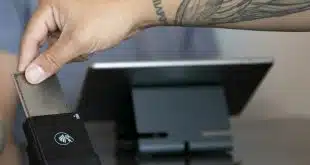Fears about fraud losses from duplicate check deposits have plagued mobile remote deposit capture since its inception. Finding data to confirm or debunk those fears, however, has been tough, at least until now.
It seems that mRDC fraud is pretty low, according to results of an April-May survey that Alpharetta, Ga.-based RemoteDepositCapture.com reported Thursday. The duplicate fraud-loss rate sustained by 142 banks and credit unions responding to a question about such losses was 0.0104%, or 1.04 out of every 10,000 items. The financial institutions examined 21.3 million checks deposited through remote capture in 2014.
RemoteDepositCapture.com disclosed the results in a Nov. 19 webinar sponsored by Mitek Systems Inc., a San Diego-based developer of imaging software widely used in mobile capture.
“To our knowledge this is the first time this type of data has been published to the industry,” says John Leekley, founder and chief executive of RemoteDepositCapture.com, which tracks the remote capture market and sponsors an annual conference. “You can have a million duplicates, but how many you take a loss on, is a first.
Leekley adds that the rate of mobile capture fraud losses could be lower than his survey found because several respondents may have reported the deposit of a fraudulent check as mRDC fraud when in reality the transaction would have been fraudulent regardless of the deposit channel.
The rate of mobile capture fraud is far lower than the rate of returned checks, according to Leekley. The Federal Reserve has reported the overall return-item rate at 0.3%, or 30 out of every 10,000 items, he says.
In other words, according to Leekley, most duplicates occur for reasons other than fraud, such as the inadvertent or mistaken second deposit of a deposited check, or the cashing of a deposited check. “Banks are going to see duplicates … the real question is are they going to take a loss on it,” Leekley says.
In mobile capture, the depositor photographs the front and back of a check with her smart-phone camera and uploads the images through her online banking program—and retains the check for a time before destroying it. Thus, it’s not surprising that concerns about the potential for duplicate deposits slowed the adoption of mobile capture by financial institutions and led the Federal Financial Institutions Examination Council (FFIEC), a consortium of bank and credit-union regulators, to issue guidance in 2009. “What is unique is this issue of duplicate items,” says Leekley.
Other results of RemoteDepositCapture.com’s study show bankers’ fears may be abating. Among the 58 financial institutions reporting that they had sustained an mRDC loss, 71% still said the benefits of mobile capture far outweigh the costs and risk. Twenty-eight percent cited marginal benefits, while 2% called mRDC a loss leader.
Among the 322 total respondents, 97% now offer the service or are rolling it out, but 54% have offered it for only a year or less or are in the process of implementation.




